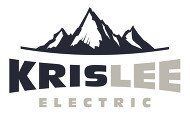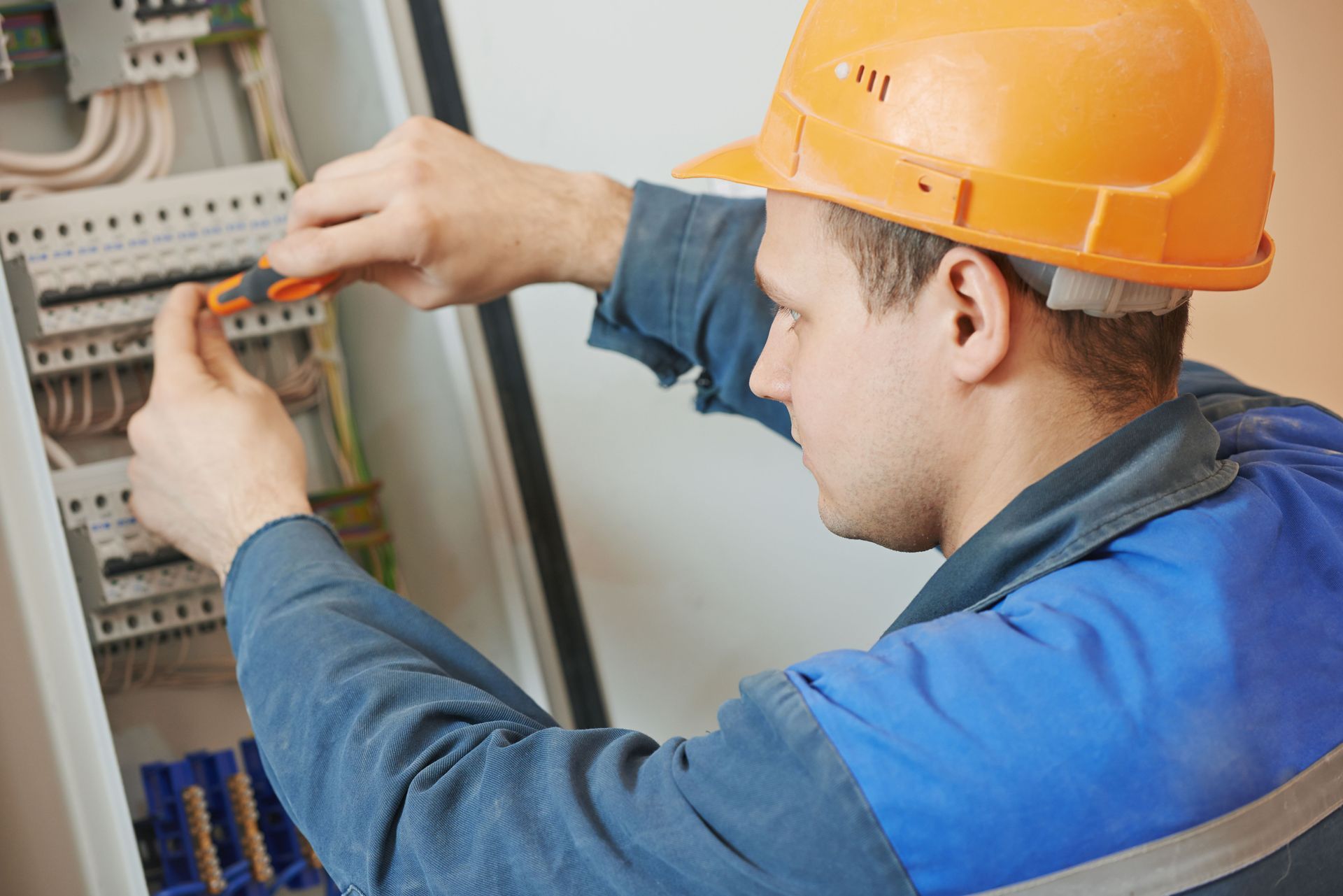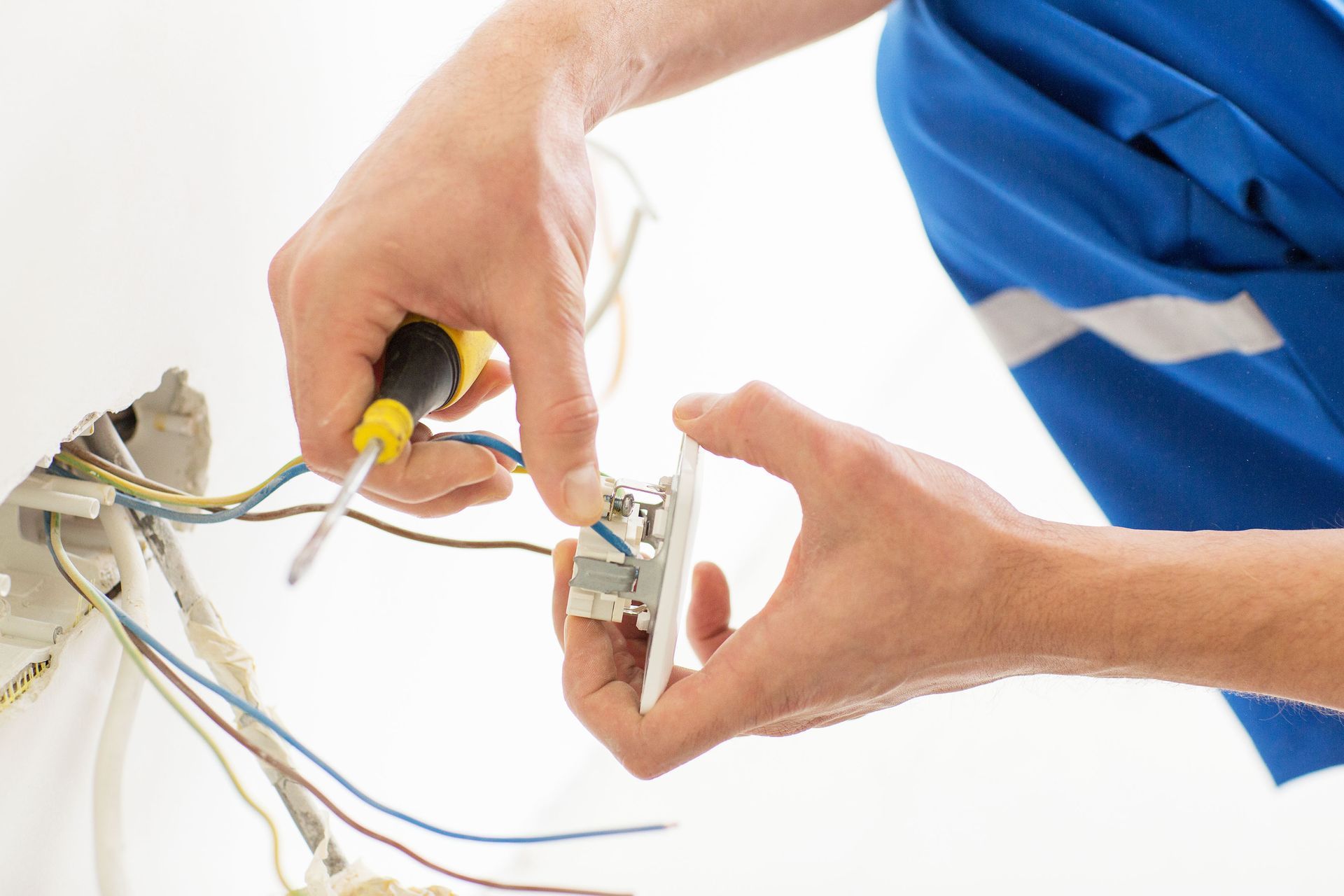Commonly Asked Electrical Questions
February 22, 2024
Common Electrical Questions Answered
Can I repair my own electrical system?
Electrical work can be dangerous. If you don’t have any idea what to do or where to start, you need to hire an electrician to take care of any electrical needs you have. You don’t want to get injured due to not having enough knowledge. Don’t let electrical work scare you, there are some projects homeowners can do on their own. For example, you can change out light switches, receptacles, and light housings. Make sure you switch off the breaker to the electrical circuit you are working on before you start any project.
What is a GFCI outlet?
Do you know the outlets with the test and reset buttons? Those are GFCI outlets. GFCI stands for ground fault circuit interrupter. These outlets are used in wet areas of a home like a kitchen and bathroom. This outlet works by killing the power to the circuit if it senses a difference in the outgoing and incoming current. These outlets help prevent electric shock due to faults.
What’s the difference between a fuse and a breaker?
Fuses and breakers perform similarly. They disrupt the flow of power when there is a fault in the system. The major difference between a fuse and a breaker is that when a fuse trips, it needs to be replaced. When a breaker trips, it can be easily reset. That is why breakers are used more than fuses.
Why is my breaker tripping?
Have you lost power in a section of your home and when you go to your panel to check you see a breaker has been tripped? That is an electrical panels way of keeping you safe. When there is too much load on the circuit, the breaker will trip. The breaker trips to prevent your wiring from overheating.
How do I reset a tripped breaker?
- Locate the electrical panel and open the cover.
- A tripped breaker will be in the “off” position, or somewhere between “on” and “off”.
- Reset the breaker by moving it to the full “off” position and then back to the “on” position.
- This should restore power.
If the breaker trips again, it could be because too many things are plugged into the circuit, damaged wires, bad switch, or faulty wiring. If it keeps tripping, call a licensed electrician
to troubleshoot the issue for you.
Should I upgrade my 100 amp to 200-amp service?
Most older homes have 100-amp electrical panels. There wasn’t as much power being used then as there is now. New technology has increased the amount of amps homeowners need for all the new appliances and devices. It is worth the money to upgrade your service to a 200 amp to make sure you have enough power when you need it.
It is best to have an electrician do the upgrade. Call us
today to schedule a panel upgrade.
Now that we have answered some of the most asked electrical questions, your next move should be to contact a licensed electrician for upgrading or repairing anything electrical. You could worsen your issue or make a bigger problem if you try to fix it on your own.


Thanksgiving today is a warm, cozy holiday filled with good food, family, and football. But imagine trying to pull off your Turkey Day traditions without electricity—no oven, no lights, no parade on TV, no fridge full of leftovers! Electricity plays a huge part in how we celebrate Thanksgiving now, and it’s easy to forget that it wasn’t always this way. Let’s take a little journey through history to see how far we’ve come—and how power has changed the way we celebrate the season. 🕯️ Before the Flip of a Switch: Thanksgiving in the 1800s When Abraham Lincoln declared Thanksgiving a national holiday in 1863, most homes relied on oil lamps, wood stoves, and hand-powered kitchen tools. Cooking a full Thanksgiving meal meant: Chopping wood for fuel Baking pies in cast iron ovens Storing perishables in iceboxes, not refrigerators Lighting the dinner table with candles or gas lanterns There were no electric carving knives, no slow cookers, and certainly no "smart ovens." ⚡ The Spark of Modern Comfort: Electricity Enters the Scene Electric power began lighting up American homes in the late 1800s, but it wasn’t until the 1920s–30s that electricity started becoming more common in middle-class homes—just in time to revolutionize the Thanksgiving experience. Electric ovens made cooking faster and more precise Refrigerators extended food storage Electric lighting meant more family and guests could gather late into the evening Radios and, later, televisions brought entertainment to the holiday table Fun Fact: The first Macy’s Thanksgiving Day Parade with a television broadcast aired in 1948—and it’s been a Thanksgiving staple ever since! 🦃 Thanksgiving in the Age of Smart Homes Fast forward to today, and we’re cooking turkeys with Wi-Fi ovens, setting timers with smart speakers, and managing the entire meal with a phone app. Modern Thanksgiving might include: Programmable smart thermostats to keep guests comfortable LED holiday lights that save energy and reduce fire risk Backup generators ensuring nothing interrupts the big meal EV chargers for guests arriving in electric vehicles Watching the game in 4K while the robot vacuum cleans up crumbs 💡 We’re Thankful for Progress—and for You We’re grateful for the modern power that keeps our homes safe, warm, and full of life—especially around the holidays. And we’re even more thankful for the customers and community who trust us to keep that power flowing year-round. Whether you're upgrading your kitchen, installing smart devices, or making sure your panel is ready for holiday guests, we’re here to help. Contact us for a pre-holiday electrical inspection or service—so your Thanksgiving can be powered by peace of mind. Wishing you a bright, warm, and happy Thanksgiving from all of us at KrisLee Electric! 🦃




Share On: